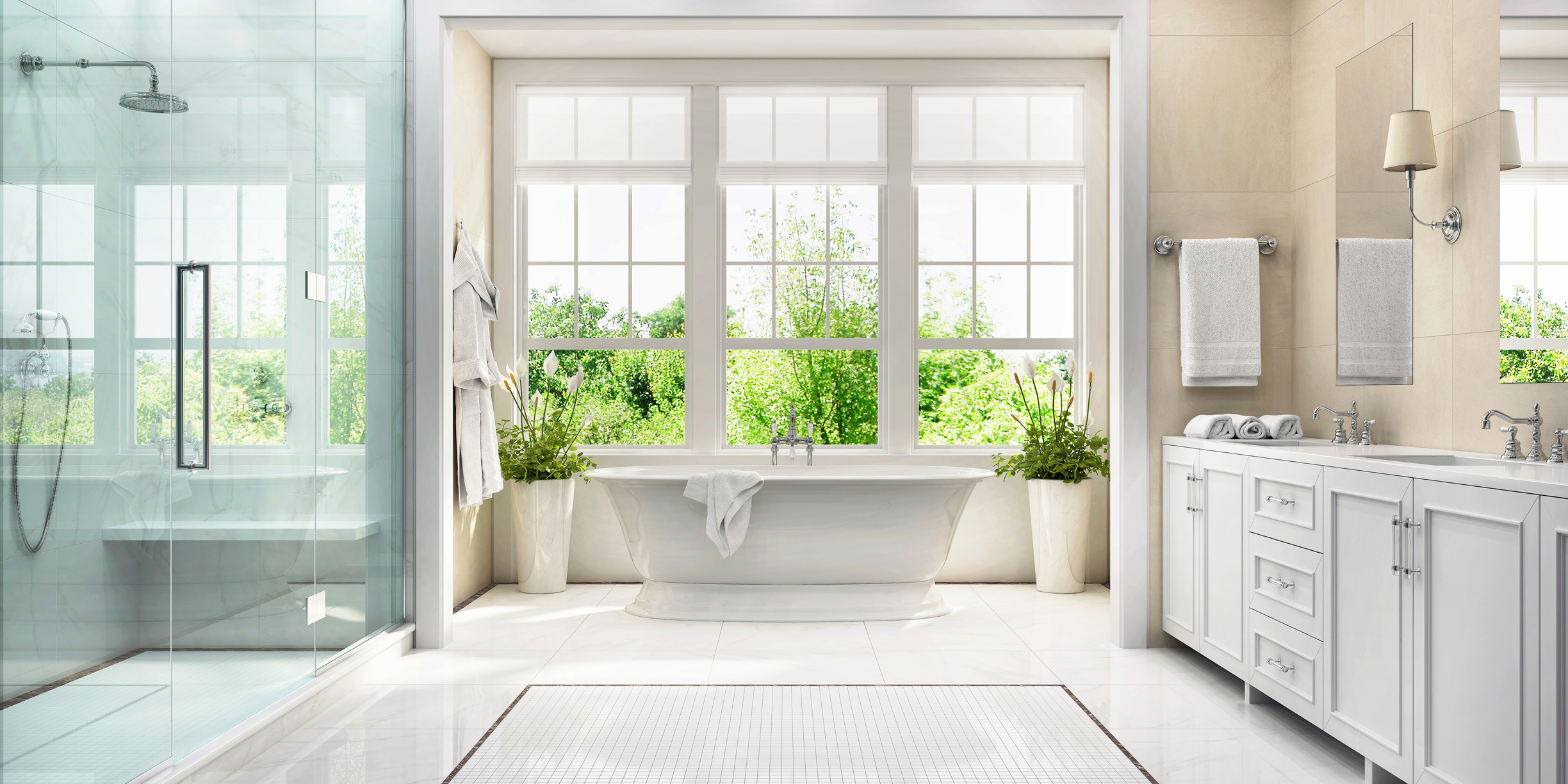Tile floors throughout your house can start looking a little grimy after a while without scrubbing. Keep the tile surfaces in your home looking neat with routine cleaning.
Regular care also helps maintain your tile; it minimizes scratching and deterioration and allows you to keep an eye out for any damaged tiles that might need to be replaced.
Making a DIY Tile Floor Cleaner
The cleaning solution you use depends on the kind of tile you have in your home.
For ceramic and porcelain tile, the most common types of flooring, you can make a safe and effective DIY cleaner out of regular kitchen items. Simply fill a bucket with warm water, and for every gallon of water, add ¼ cup of distilled white vinegar. You can add a squeeze of lemon juice or a few drops of essential oil to add a lovely scent if you wish.
If your floors are particularly grimy, upgrade your cleaner by mixing two gallons of hot water, ¼ cup of distilled white vinegar, ¼ cup of washing soda, and a squeeze of dish soap.
For natural stone tiles, including marble, granite, limestone, slate, and more, avoid acids like vinegar and lemon, which can degrade your tiles. Instead, mix warm water with a mild, pH-neutral detergent. Look for non-alkaline detergents without hydroxides, silicates, or phosphates.
Keep your cleaning ingredients on hand since you may need to empty your bucket and mix new cleaner as the water becomes dirty.
How to Wash Bathroom Floor Tiles, Kitchen Floors, and Other Tile
At least once a week, sweep or vacuum your tile floors. This removes dust and debris that can scratch or degrade the tile. High-traffic areas, like mudrooms, should be cleaned more often: try 2-3 times a week for the best results. The more you keep up on your cleaning schedule, the less dirt gets into the grout and the less often you have to wash your tile floors.
When you do notice your tiles starting to get dirty or filmy, it’s time to mix up your cleaning solution and get to work:
- Mix your cleaner and get a rag or mop. Do not use a sponge mop, which can grind dirty water into the grout.
- Mop your tiles thoroughly, changing the water when it gets noticeably dirty.
- Wipe coated or glazed tiles dry after washing to avoid water spots.
Wet-clean your tile floors once a week in the bathroom (to avoid germ buildup) and once every two weeks in the rest of your home for consistently beautiful tile flooring.
How to Clean the Grout on Tile Floors
When grout looks grimy, skip the commercial cleaners: All you need for sparkling grout is baking soda, water, a bowl, and a brush.
- In your bowl, mix baking soda with enough water to form a paste. It shouldn’t be gloopy or runny, but it may feel a bit grainy.
- Spread the paste on the grout and let it sit overnight. You can use your hands, wearing latex or rubber gloves.
- Scrub the grout with a stiff-bristled nylon brush (ceramic or porcelain tile) or a soft-bristled nylon brush (natural stone tile). Never use a metal brush, which can scratch the tile. Scrub until the grout returns to its natural color.
- Vacuum up any excess baking soda.
- Seal your grout with a silicone-based grout sealer to reduce or prevent stains in the future.
Take Washing Tile Floors Off Your Chore List: Let Us Take Care of It
Whether you don’t have the time to dedicate to constantly cleaning your tile floors or you just don’t want it on your to-do list, the professional cleaners at The Cleaning Authority are here to help.
We clean your tile (or hardwood or carpet!) floors as part of our routine cleaning service, keeping them shining. Sit back and relax while we take care of the hard work. Schedule your regular cleaning when you call (888) 658-0659 or request an estimate online.

